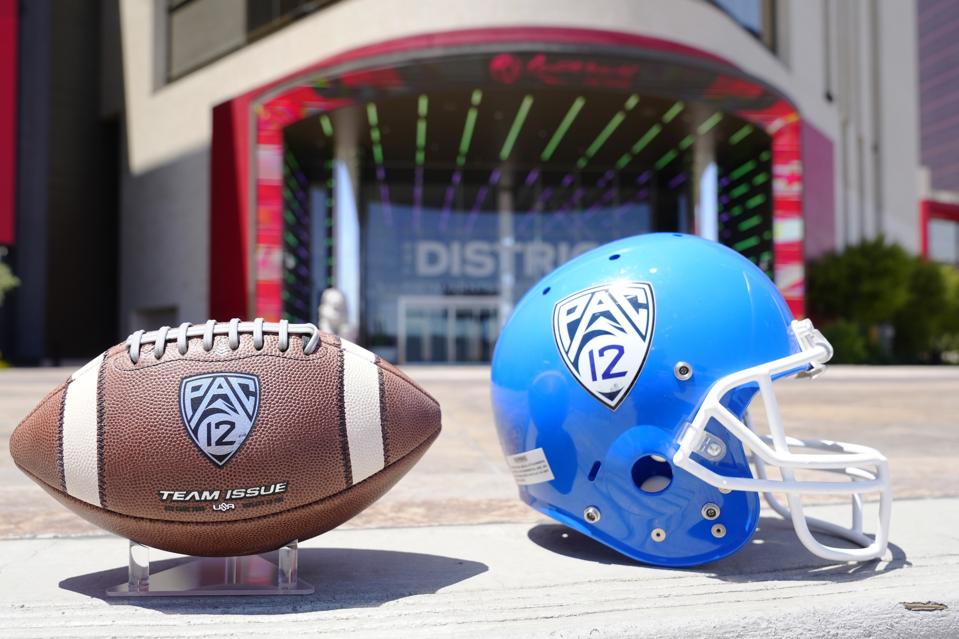The Pac-12 announced on Monday that the Texas State Bobcats will join the conference as its ninth member beginning with the 2026–27 season. The move gives the Pac-12 a foothold in the state of Texas, opening the door to new media markets, fertile recruiting pipelines, and expanded presence across time zones for television deals. Most importantly, the addition of Texas State gives the conference the eight requisite number of teams it needs to compete at the FBS level starting in the 2026-27 season.
There had been much speculation surrounding Pac-12 conference expansion since the conference announced its plans to add members of the Mountain West Conference in September 2024. With Texas State now on board, the Pac-12 appears to have stabilized its footing and reasserted itself as a legitimate player in the Group of Five landscape
Brief History Pac-12 Conference Realignment
While the broader story of college football realignment does not begin with the Pac-12, few conferences have been more dramatically reshaped by it. In what now seems like ancient history, the Pac-10 Conference originally pushed to expand into the state of Texas when it pursued the University of Texas in 2010. That deal ultimately fell through, but it marked the beginning of a series of realignment waves that would transform the national landscape.
The Pac-10 soon became the Pac-12, adding Colorado and Utah, and for a time, the conference looked poised to rival the SEC and Big Ten in prominence. But a combination of media rights missteps, leadership turnover, and on-field struggles left the Pac-12 vulnerable. The exodus began in earnest in 2022 and 2023, when USC and UCLA announced their departure to the Big Ten, followed by Oregon, Washington, Arizona, Arizona State, Utah, and Colorado.
Oregon State and Washington State were left holding the banner. Rather than fold, the two schools leveraged their legal control of the conference and its remaining assets to rebuild. They moved quickly to bring in Boise State, Colorado State, Fresno State, Gonzaga (non-football), San Diego State, and Utah State. Now, in a full-circle twist, the Pac-12 has finally entered Texas, not with the Longhorns, but with Texas State.
What Texas State Brings To The Pac-12
Located in the heart of one of the fastest-growing corridors in the country, between Austin and San Antonio, Texas State offers the Pac-12 a critical geographic foothold in Central Texas, a state long viewed as essential to the college football ecosystem. The Bobcats joined the Pac-12 just one day before a July 1 deadline where the buyout to leave the Sun Belt would have doubled from $5 million to $10 million.
Texas State is a growing university of almost 38,000 students that recently invested $149 million into its athletics facilities including a $37 million football performance center and a $23 million stadium naming rights partnership with University Federal Credit Union. The fan base has responded in kind. Over the past two seasons, Texas State has posted consecutive attendance records, reflecting an energized community and growing local interest in the program’s trajectory.
On the field, the Bobcats are catching attention. Under head coach G.J. Kinne, Texas State went 8–5 last season and came within three points of defeating Arizona State, a team that went on to play in the College Football Playoff.
In a landscape where conferences are prioritizing upside, flexibility, and untapped potential, Texas State is a bet on the future. A university that’s building fast, buying in fully, and ready to compete on a national stage.
What’s Next for the Sun Belt?
Texas State’s departure brings the Sun Belt Conference from 14 to 13 members, a change that could prompt the league to explore expansion options to restore numerical balance and maintain divisional alignment. The Sun Belt’s latest expansion, which added Southern Mississippi, Marshall, Old Dominion, and James Madison, solidified its reputation as a rising Group of Five conference with strong regional rivalries and growing football relevance.
Speculation is starting to spread on whether the Sun Belt will look to add another team to account for the loss of Texas State. Potential candidates include current Conference-USA members Louisiana Tech, Florida International, Middle Tennessee State, and Western Kentucky. The latter three schools are all former Sun Belt members. Each candidate presents a different mix of geographic alignment, institutional fit, and media potential. The Sun Belt has been strategic in recent years, prioritizing football-first programs with regional appeal.
A New Era for the Pac-12
Texas State’s move to the Pac-12 marks more than just a change in conference affiliation, it reflects the broader evolution of college football. For the Pac-12, the addition of Texas State secures a critical eighth FBS member, expands the league’s footprint into a talent-rich region, and signals a willingness to reinvent. For Texas State, the move represents a significant step up in visibility, competition, and opportunity.

